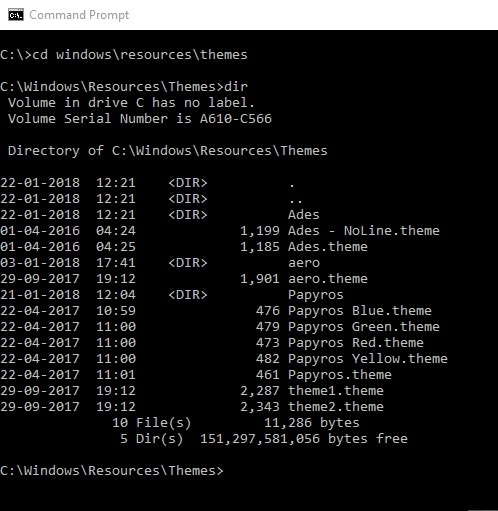Windows does not support third-party themes out of the box. There are still so many third-party themes floating around on the internet for Windows. That’s because there is a way to install third-party themes on Windows thanks to the enormous developer support due to the popularity of Windows. This requires modifying essential system files that can break the system altogether. That is to say, it is risky. This is where creating a system restore point can come in quite handy. Sometimes it can cause problems. What if you did not create a restore point? Here, we’ll show you how to recover from a black or gray screen caused by third-party corrupt themes on Windows 10.
You will need a bootable Windows media to do this. Unless your installation media has the feature disabled, you can access the command prompt and delete the theme that caused your system to break. After that, you can trick Windows into using the default Windows theme. This should, in most cases solve the problem. There’s a catch though, you must remember the exact name of the theme that broke your system. In my experience, one usually does.
Steps to Fix Black Screen on Windows 10
For the sake of it, let’s assume that the theme that broke your system was named corrupt theme.
- Boot from your bootable media and press Shift+F10 on the keyboard when you see the first Setup screen. This is before you click anything.

- Usually, the drive your Windows is installed on is the C drive and even if you have changed it you’ll probably remember the drive your Windows is installed on. If nothing else, you did access the Windows folder on this drive to place the corrupt theme in it. Type ‘C:‘ in the command prompt to select it as the active drive. If your Windows installation drive is associated with another letter, replace that instead of C.
- Use the following commands now to navigate to the Windows themes folder.
cd\ cd windows\resources\themes
- In case you don’t remember the name of the theme, type dir in the command prompt and hit enter. This will list all files and folders in the Windows themes folder. For instance, in the screenshot below, I have Ades, Papyros, and Windows’ default Aero theme. These three folders are Ades, aero, and Papyros and there are multiple .theme files.

- As mentioned before we now have to delete the corrupt theme. This theme will have one or multiple theme files such as corrupt theme 01.theme, corrupt theme 02.theme, etc., and a folder named corrupt theme. Use the del command to delete these files and the rmdir command to delete the folder. For instance, if I had to delete the Ades theme from my computer, I’d use the following commands:
rmdir Ades del Ades.theme del "Ades - NoLine.theme"
Use inverted commas if the file or folder you’re trying to delete has spaces in its name. Make note of the exact names of the files and folders you’re deleting because you cannot afford to forget them again.
- The theme may be gone now but Windows, when it tries to boot, will still try to use it. There’s no way of changing the theme from the command prompt but you can trick Windows into using the default theme. To do this, you have to copy the default theme and give it the name of the corrupt theme. You can use the following command to rename the aero folder to the corrupt theme folder.
xcopy aero "corrupt theme" /i - Your corrupt theme may have had multiple .theme files with different names. The default Windows theme, i.e. aeros only has one aeros.theme file. You’ll have to give it the name of the .theme file you had applied before things happened. Let’s say you applied the one named corrupt theme 01.theme. Now to copy and rename the .theme files, use the following command.
copy aero.theme "corrupt theme 01.theme"
That should be all you have to do and you can now reboot your system. If you had Fast Startup disabled already, that is. In case you had not disabled Fast Startup before things came crashing you might still not be able to boot into your system. Fortunately, you can boot Windows 10 into Safe mode and do just that.
Once in Safe Mode, launch a command prompt Window and disable Fast Startup with this command:
REG ADD "HKLM\SYSTEM\CurrentControlSet\Control\Session Manager\Power" /V HiberbootEnabled /T REG_dWORD /D 0 /F
That’s it! You should have fixed the black screen issue caused by 3rd-party corrupt themes on Windows 10.
Don’t Miss: How to Make Windows 10 Boot Faster
